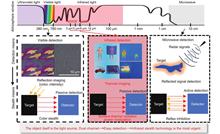 View fulltext
View fulltext
The lithography objective is the core component of the lithography machine, and its wave aberration determines the resolution and overlay accuracy of the lithography machine. With the gradual improvement of the performance of the lithography machine, the wave aberration requirement of the lithography objective lens has been reduced to below 0.5 nm (RMS), which is a great challenge to the detection of the wave aberration. The detection accuracy of current lithography objective wave aberration detection methods (such as Hartmann method, shear interference method and point diffraction method, etc.) is often limited by its systematic error, and absolute detection technology is a method that can separate the systematic error. The technology that came out finally broke the limit of precision. This paper reviews the wave aberration detection method and surface absolute detection technology of lithography objective lens system, combs the application and research progress of absolute detection technology in wave aberration detection in detail, and summarizes the application of absolute detection technology in different wave aberration detection methods. At the same time, combined with these difficulties, the future development trend of the absolute detection technology of wave aberration of lithography objective lens is prospected.
In a traditional epi-illumination fluorescence microscope, the detection path is coaxial with the illumination path, which induces the non-focal plane fluorescence and deteriorates the imaging quality. Light sheet fluorescence microscopy (LSFM), differing from the traditional fluorescence microscopes, adopts an orthogonal configuration of detection and illumination paths. A thin sheet is formed from the excitation beam, which only excites a single layer of the sample. This methodology prevents the excited fluorescence from the non-focal plane during imaging. Besides, the utilization of the laminar illumination light can significantly reduce the exposure time of the fluorescence imaging. As a result, the effects of photobleaching and phototoxicity are decreased. In this review, we first introduce the basic light path structure compositions of a LSFM system as well as the optimization and innovation based on these structures. Next, we discuss enormous processing methods developed for samples both in vitro and in vivo. Benefiting from all these innovations, LSFM outstands in performing the 3D imaging of the fluorescence-labeled biological samples and can function steadily for a long recording time. Finally, we propose potential researching directions in the future, and discuss the technical limitations of current LSFM. This review aims to provide researchers in the relevant scientific research fields with a comprehensive understanding and inspiring reference of LSFM techniques.
With the rapid development of military optoelectronic technology, the role of stealth technology in modern combat systems is becoming more and more important, among which, stealth materials are crucial to improve stealth performance. We focus on infrared stealth materials and review the research progress of domestic and foreign infrared stealth materials from three aspects including single-band infrared stealth, multi-band compatible infrared stealth, and dynamic infrared stealth, and provide an in-depth analysis on the large-area flexible processing methods for micro-nano structures. The main problems of current infrared stealth materials are summarized and the future development trend is foreseen. In the future, to achieve high-performance stealth functions, new infrared stealth materials will further develop in the direction of high strength, large area, flexibility, and intelligence.
The lightweight SBG inertial navigation system has the characteristics of being small and light, which can be used for the direct and strapdown stabilization of the electro-optical tracking system. In this paper, five inertial stabilization control methods based on the lightweight SBG navigation system in gimbals are studied, and theoretical analysis and experimental validation are performed. The classical position strapdown stabilization technique has limited disturbance suppression capability due to the limitation of position bandwidth, which makes it difficult to meet the requirement of high-precision stabilization. A SBG-based position-rate dual strapdown feedforward stabilization method is proposed, and the decoupling of the strapdown feedforward is achieved by introducing a high-pass filter, which can further improve the perturbation rejection bandwidth as well as the stabilization capability of the system. Theoretical analysis and experimental results show that the SBG-based gyro direct stabilization control method is better at disturbance suppression when the application conditions are not considered, although it is limited by the bandwidth. Under the limitations of platform volume and weight, the proposed SBG-based dual disturbance strapdown stabilization can further improve the system's disturbance rejection capability and obtain better stabilization accuracy.
Scintillation glasses have potential application in hadron calorimeter of circular electron positron collider (CEPC) due to the advantages of simple preparation process, flexible and controllable size, and low cost. Among them, Ce3+ luminescent center doped scintillation glasses have better scintillation performance. Matrix glass can be classified into oxide glass, halide glass, and glass-ceramic. According to the classification of different matrix glasses, this paper focuses on the optical transmittance, light yield, decay time, and radiation resistance properties of the Ce3+-doped scintillation glasses. Moreover, we introduce and summarize the research progress at domestic, foreign, and GS R&D Group. In view of the research status of different glasses, the methods for improving the glass performance are discussed from two aspects of glass composition and preparation. Finally, the future research and development directions of Ce3+-doped scintillation glasses are prospected.
Non-line-of-sight imaging techniques can be used to capture images of objects that are hidden away in corners, and this technology has many useful applications. The captured signal is insufficient when the laser sends laser light to the intermediate surface, which is a problem when utilizing a digital micromirror device (DMD) in a confocal non-line-of-sight optical route because of the spectroscopic impact of the DMD. In order to increase the signal-to-noise ratio of the echo signal, the acquisition method of spatial multiplexing detection (SMD) is introduced into the confocal optical path in this study. SMD is integrated with the reconstruction algorithm of the light-cone transform (LCT). Based on the confocal non-line-of-sight imaging optical path, the laser initially emits laser pulses, followed by SMD collecting concealed object echoes, and the LCT algorithm concludes the reconstruction. The experimental results demonstrate that the single-pixel camera can complete the reconstruction using the LCT algorithm after employing the SMD acquisition method in the confocal non-line-of-sight optical route, which may improve the signal-to-noise ratio and the reconstruction quality.
Polarization integrated detector has the advantages of small size, light weight, compact structure, and no need for image registration to detect and recognize the dynamic targets simultaneously at the same place. This article mainly introduces the research progress and applications of polarization integrated infrared detector. We analyse the key technologies for obtaining high extinction ratio polarization integrated detectors, such as grating structure design and simulation, submicron polarization grating preparation, integration and testing, polarization image data reconstruction, etc. Finally, we introduce the typical applications of polarization imaging in unmanned aerial vehicles, camouflaged trucks, landmines, sea vessels, facial recognition, road recognition, sea oil leakage detection, medical detection, etc.
To solve the problem of beam splitting limitation of cemented cubic beam splitters in the mid-wave infrared band, the optical design scheme of mid-wave infrared Fizeau interferometers based on wedge splitting is proposed. At the working wavelength of 3.39 μm, to reduce the return error of the interference system and improve the measurement accuracy, a two-reflection folding collimating optical path structure is adopted, which not only ensures a good collimating wavefront, but also optimizes the design of the optical wedge to take into account the wavefront quality of the interference imaging. ZnSe and CaF2 materials are used, the collimator of the interferometer is a single plano-convex aspheric structure, and the imaging lens is composed of two separate spherical mirrors. Through the Montecarlo simulation tolerance analysis, the collimator wavefront PV of the collimator within 0.1° field of view is better than λ/4. The normalized field of view imaging wavefront PV of the interferometric optical path is better thanλ/5; The interferometric system return error is smaller than λ/50 at 0° field of view placed on the standard surface and the surface under test is tilted within 0.05°.














